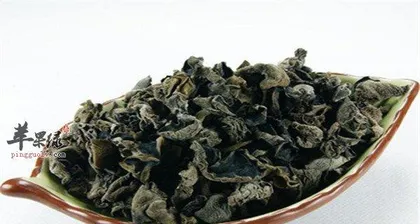Wood ear is a very common wild fungus, widely picked and eaten as early as ancient times. As people pay more attention to a healthy diet, wood ear has gradually become a popular ingredient. What exactly is wood ear? What plant category does it belong to? What are its growth environment and characteristics? We will answer these questions one by one.

I. Plant Classification of Wood Ear
II. Types of Wood Ear
III. Black Wood Ear
IV. Tremella (Silver Ear)
V. Enoki Mushroom
VI. Morphological Characteristics of Wood Ear
VII. Growth Environment of Wood Ear
VIII. Temperature Requirements
IX. Humidity Requirements
X. Light Requirements
XI. Soil and Nutrient Requirements
XII. Growth Cycle of Wood Ear
XIII. Harvesting and Processing of Wood Ear
XIV. Nutritional Value of Wood Ear
XV. Conclusion: Unleashing the Health Benefits of Wood Ear
I. Plant Classification of Wood Ear
Wood ear is a fungus, belonging to the Basidiomycota phylum, Auriculariaceae family, and Auricularia genus, with the scientific name Auricularia auricula-judae. Like other wild fungi such as mushrooms, shiitake, and matsutake, it is a common ingredient in people's daily diet.
II. Types of Wood Ear
Currently, there are many known types of wood ear, which can be broadly divided into three categories: black wood ear, tremella (silver ear), and enoki mushroom.

III. Black Wood Ear
Black wood ear, also known as cloud ear, grows on oak and elm trees. It has a dark red to brown color, a firm texture, and a fresh, crispy taste.
IV. Tremella (Silver Ear)
Tremella, also known as white wood ear, grows on trees like maple and elm. It is semi-transparent, has a soft and smooth texture, and is highly nutritious.
V. Enoki Mushroom
Enoki mushroom is a typical wild fungus, light yellow to white in color, with a crisp and tender texture and rich nutritional value.

VI. Morphological Characteristics of Wood Ear
The shape of wood ear resembles a human ear, hence its name "wood ear". Its body color varies, including black, white, gray, brown, and red, with black wood ear and tremella being the most common. Wood ear is relatively large, reaching 8-10 cm in size. It is flat in shape, similar to some flakes or small plates. Its surface is relatively smooth, the texture is soft, and it has a certain chewiness.
VII. Growth Environment of Wood Ear
The growth environment of wood ear is relatively special; it needs a relatively moist, cool, and well-ventilated environment to grow. During the growing season, wood ear has relatively high requirements for temperature, humidity, and light.
VIII. Temperature Requirements
Wood ear needs to grow at relatively low temperatures, generally requiring the temperature to be below 10°C. If the temperature is too high, it will cause the wood ear to lose its ability to grow.
IX. Humidity Requirements
Wood ear growth requires a relatively humid environment, maintaining a humidity of over 80%. Both excessively high and low humidity are not conducive to the normal growth of wood ear.
X. Light Requirements
The effect of light on the growth of wood ear is relatively small, but during the growth period, appropriate light can increase the yield and quality of wood ear.
XI. Soil and Nutrient Requirements
Wood ear growth requires adequate water and nutrients. Wild wood ear mainly grows by absorbing nutrients and moisture from tree trunks; soil is not a key factor.
XII. Growth Cycle of Wood Ear
The growth cycle of wood ear is relatively long, generally around 40-50 days. During this cycle, wood ear goes through multiple stages such as germination, elongation, and maturation.
XIII. Harvesting and Processing of Wood Ear
After harvesting, wood ear needs to be properly cleaned to remove soil and other impurities before it can be used after simple processing. Common processing methods include soaking, drying, and steaming.
XIV. Nutritional Value of Wood Ear
Wood ear contains a variety of vitamins and minerals and has multiple health benefits such as lowering blood lipids, anti-tumor, and preventing cardiovascular diseases. It can also enhance immunity, reduce fatigue, and delay aging.
XV. Conclusion: Unleashing the Health Benefits of Wood Ear
In summary, wood ear is a very common wild fungus with various nutritional values and health benefits. By understanding its growth environment and characteristics, we can better utilize this ingredient and unleash its health value.